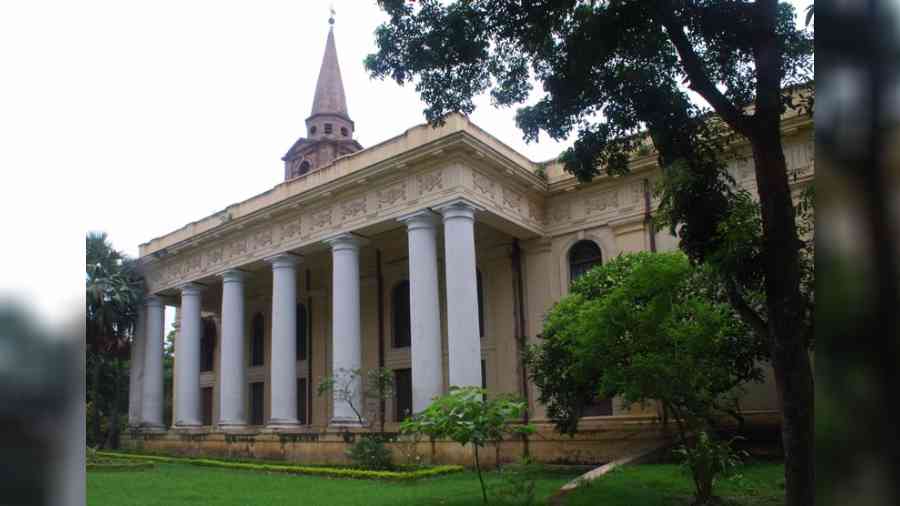The foundation stone of St John’s Church was laid “under the auspices of the Hon’ble Warren Hastings, Esq., Governor-General of India”. St John’s Church is one of the oldest churches in the city.
According to the bishop of Nagpur Eyre Chatterton’s 1924 account: “The prime mover in its building was the Rev. W. Johnson, an Oxford graduate, who arrived in Calcutta as second Chaplain in 1772.”
To build the church, “A public subscription list was opened…and in 1783 nearly Rs 35,000 had been collected. Warren Hastings took a keen personal interest in the matter, and through his influence the Maharajah Nob Kissen (Naba Krishna Deb) was willing to part with a piece of ground measuring six bighas, close to the old burying-ground and known as the Old Powder Magazine Yard.”
To raise more money, a lottery was held. The stately church building, designed by architect James Agg of Bengal Engineers with a classical temple front and spire, is modelled on St Martin-in-the-Fields of London. It served as the Anglican Cathedral of Calcutta till the construction of St Paul’s Cathedral. According to Henry Barry Hydra’s lively account Parochial Annals of Bengal: “On Tuesday, April 6, 1784, the Governor-General being then up-country, Mr. Wheeler (Senior Member of Council), gave a public breakfast at the Old Court House, at which were present the other members of Council and many of the principal inhabitants of Calcutta... “The inscription plate was of brass, and cost Rs 232… In July arrangements were made for procuring building stone from the ruins of the old city of Gaur, and the blue marble for the flooring of the Church from the tombs of the kings existing there. The Committee transactions, after this date, show that large quantities of stone were imported from Chunar. The steeple is wholly built with this material…
“About this time Mr John Zoffany, a Royal Academician, was in Calcutta engaged in painting a great picture of the Last Supper. Drawn into the atmosphere of the prevailing enthusiasm for the new Church, he offered this picture to the Committee as an Altar piece.” The Zoffany painting is still there, as are the memorials in the church grounds of many well-known British, such as Job Charnock, Lady Canning and Begum Johnson, the famous hostess who had been married to Rev. Johnson.
